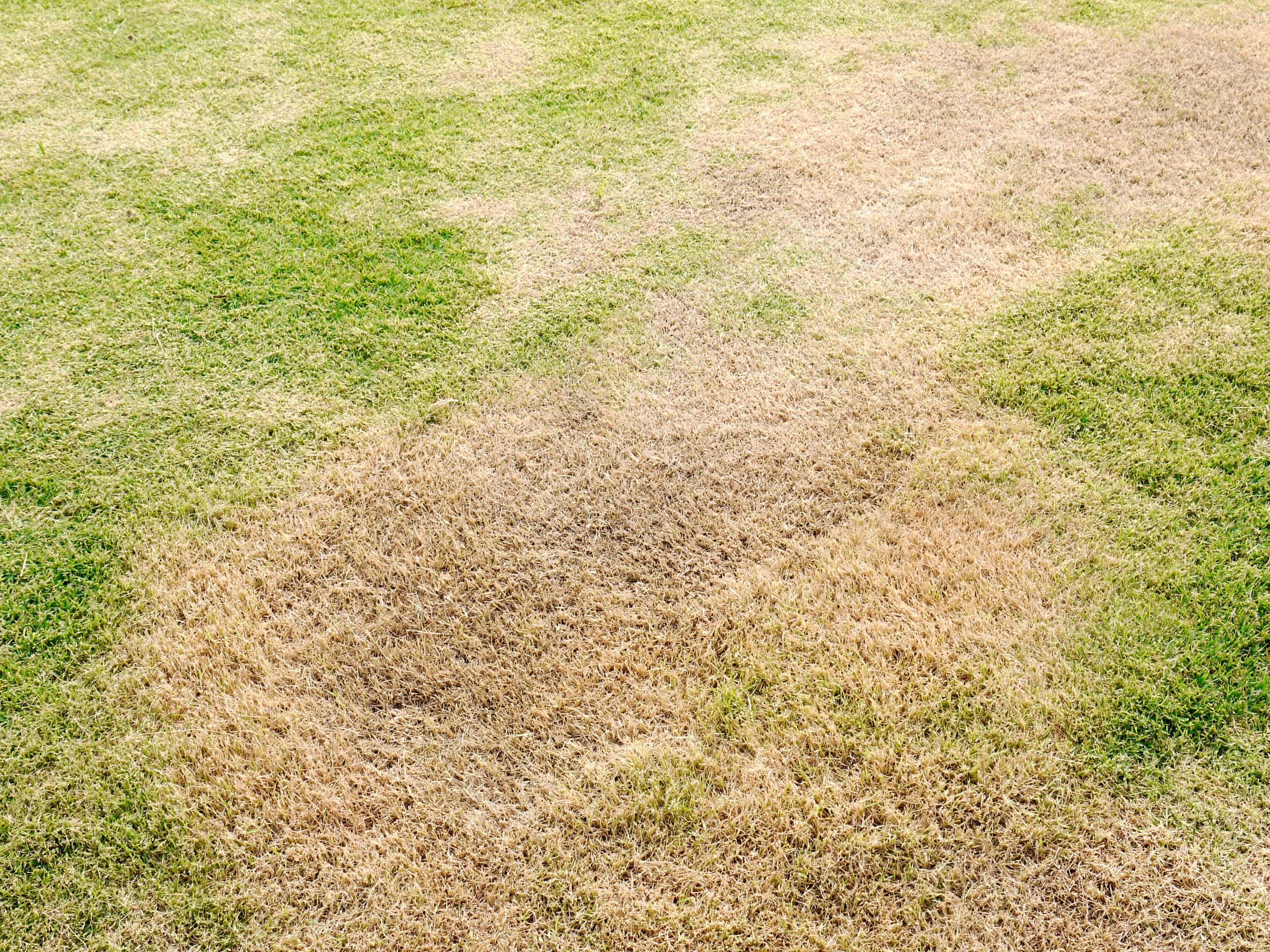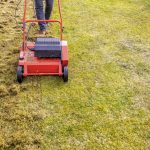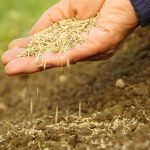If your lawn has gone brown, or otherwise isn’t looking great, there are steps you can take to improve how it looks, and nurse it back to health.
In this article, we’ve explained how to revive dead or dormant grass. We’ve also explained how to tell whether or not your grass can be saved, and how to prevent it from turning brown again.
Let’s begin.
Why is my lawn dying?
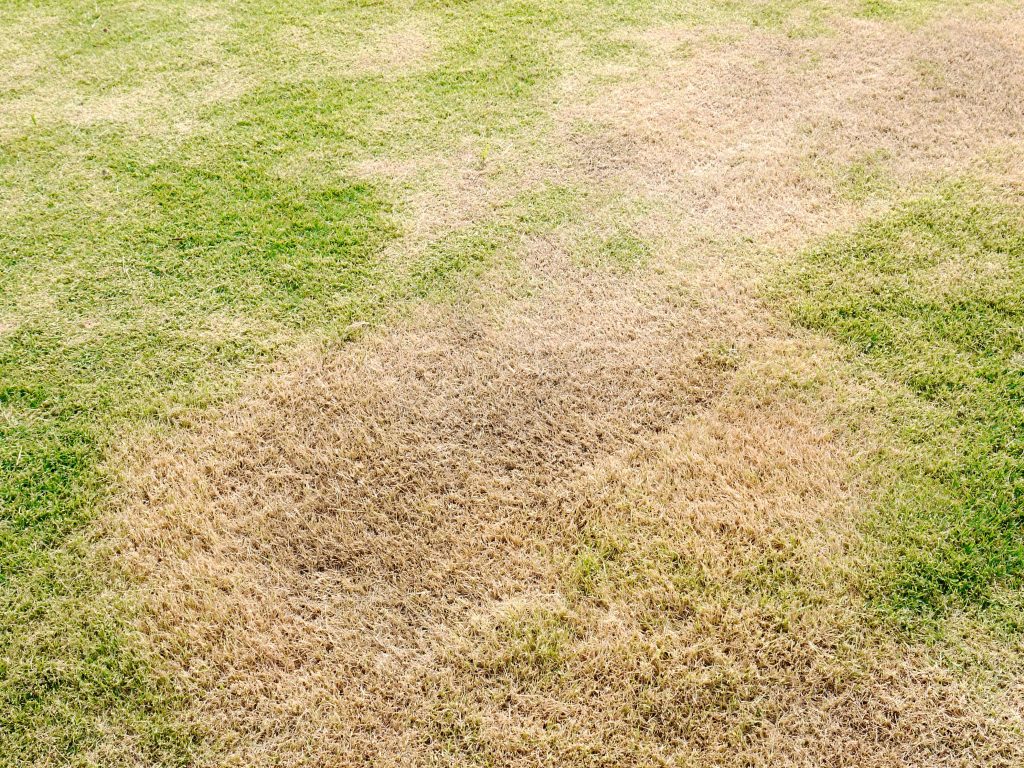
There are a number of reasons your lawn might be turning brown and dying:
- A lack of water, especially if you’ve been experiencing drought conditions.
- A lack of nutrients in the soil.
- Lawn diseases, especially fungal ones, if your grass is turning brown in patches.
- Dog urine (although this normally turns the grass yellow, rather than brown).
- Having a soil pH that is too low, meaning your soil is too acidic.
- The grass may have been cut too short, or trimmed with a blunt blade, causing the grass to be stressed out.
- Excess amounts of thatch. Having some thatch is normal, but if there’s too much, this can suffocate your grass’s root system.
Sometimes, your lawn might look like it’s dying, but isn’t actually in deep trouble. For example, cool season grasses may turn brown for a short period if the weather gets extremely hot in the summer. In this case, the best thing to do is water your lawn.
Can my lawn be brought back to life?
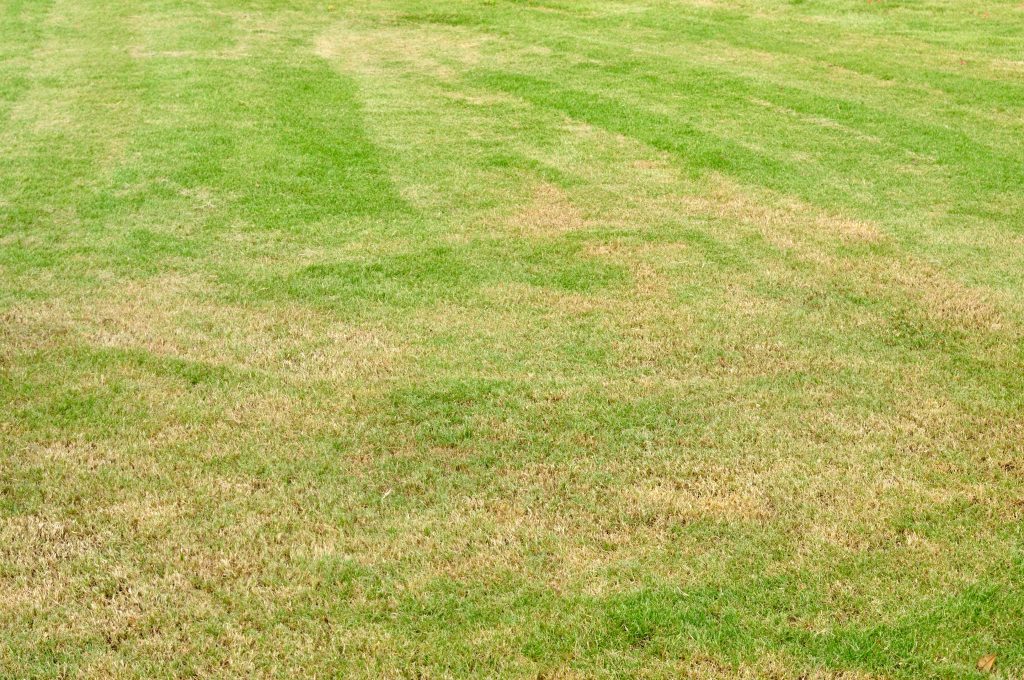
In the majority of cases, you can repair a dead lawn, and bring it back to life. This is because your lawn is not likely to be actually dead, or at least not completely. It is most likely dormant instead, especially if it’s a cool season grass.
To tell if your grass is dead, try to pull some of it out of the ground. If it comes out easily, chances are the grass is dead.
On the other hand, if your lawn stays in place, it’s most likely savable. However, there are some exceptions:
- If your lawn is almost entirely brown, and is extremely dry, then it might be best to start over.
- If you have patchy grass, with dead areas, it might be best to remove the dead grass, and reseed the bare patches, rather than trying to treat the whole lawn in the same way.
How to revive dead grass
To revive dead grass, the first thing you need to do is address the problem that caused the grass to turn brown in the first place, if it still exists.
For example, you may need to treat your soil’s pH, increasing it by top dressing it with agricultural lime. You should do a soil pH test if you believe that this could be the cause of your lawn dying.
Once the problem or problems are addressed, you can revive your lawn using some or all of the following strategies.
- Remove any weeds that are growing, by hand if possible, removing the entire plant. This gives your lawn room to breathe, helping it to become more healthy.
- If the grass is long enough, mow it, and leave the clippings on the lawn. This can stimulate your lawn to grow, provide moisture to the lawn, and also provide nutrients, as the clippings decompose.
- If you’ve decided not to mow the lawn, try top dressing it with compost, to provide some nutrients.
- Consider overseeding your lawn, especially if it is sparse in places.
- Consider aerating the lawn, especially if you believe that the soil may be compacted. This is most likely to occur if you live in an area with clay soils, and sometimes face drainage issues.
- Water the lawn, especially if dry conditions have possibly led to it dying. Sometimes, this is all that you need to do, if the lawn is dormant.
It’s best to do this process in the spring or autumn if possible, because this is the time of year when your grass is growing at its best.
How to keep your grass looking great, and prevent it from going dormant or dying

The key to preventing your lawn from going brown and nearly dying again is taking proper care of it.
In most environments, lawns are quite hardy, and don’t need constant attention. But there are some things you want to look out for.
- Not feeding your lawn enough nutrients: mulching your grass clippings rather than collecting them is an easy way to ensure your lawn gets plenty of nutrients. The clippings will decay into the soil, releasing nutrients that your lawn can feast on. You can also use fertiliser or compost to feed your lawn if you can’t mulch your clippings.
- Not watering your lawn enough, or watering it at the wrong time: when you experience a dry period, you might need to water your lawn, to prevent it from drying out. However, it’s important to water the lawn at the right time of day. If you water your lawn at the hottest hour of the day in summer, the water will mostly evaporate before the grass can soak it up.
- Drainage issues: if rainwater is sitting on your lawn, this can cause serious issues. Try to aerate the soil, or install a drain to fix this problem.
- Mow your lawn regularly, with a sharp blade: as a general rule, you should only take a third off the length of your grass on a single mow. By using sharp mower blades, and mowing regularly, you can encourage your grass to grow more healthily.
For more lawn care tips for each month of the year, read this article.
Conclusion
This is the end of our guide to reviving dead grass.
Remember, in severe cases, it may be worth removing your old lawn, and starting over again, by laying turf or planting lawn seeds.
By starting over, you’re giving your lawn the best chance of doing well, because you have the chance to prepare the soil. You can remove stones and other debris, and improve the health of the topsoil, if necessary.
You’re also in control of the start of your new lawn, meaning you have the chance to set it on the right path towards growing healthily into the future.
If you’re not sure how best to go about reviving your lawn, feel free to leave a comment below, and we’ll respond as soon as possible.

I’m Josh, and I’m the head writer at Lawn Care Pro.
I love everything lawns, but I’m a bit of a lawn mower nerd. I spend a lot of my free time tinkering with mowers, and planning my mowing schedule for the next few weeks.
I’m also into cars, which comes in very helpful when servicing a mower engine!

